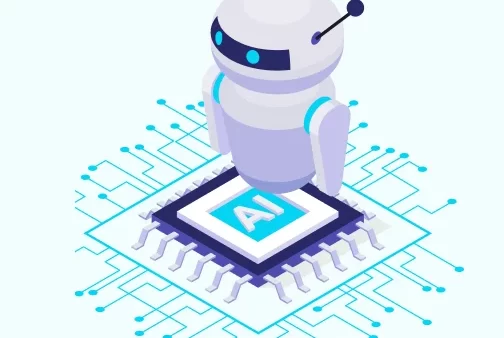In 2026, artificial intelligence (AI) is not just a tool but a transformative force across industries. Among the many advancements in AI, AI agents are leading the charge in reshaping how businesses function, how consumers engage with technology, and how humans and machines interact. From sophisticated customer service assistants to intelligent agents orchestrating complex workflows, AI agents are poised to redefine the future of automation.
This article explores what AI agents are, their evolution, their use cases in 2026, and how they are changing the landscape of work, industries, and society at large.
What Are AI Agents?
An AI agent is an autonomous system designed to perceive its environment, make decisions, and act to achieve specific goals with minimal human intervention. These agents are no longer limited to following predefined rules or responding to scripted commands. Instead, they leverage cutting-edge technologies like Large Language Models (LLMs), advanced reasoning engines, and machine learning to perform tasks that require both intelligence and autonomy.
Unlike traditional chatbots, which operate on simple rule-based interactions, AI agents can reason, plan, execute tasks, and even adapt over time. In 2026, these intelligent systems can integrate with multiple platforms, analyze vast amounts of real-time data, and even collaborate with other AI agents to carry out complex tasks.
For example, an AI agent in the customer service sector can handle inquiries, gather data, and make decisions about how to resolve issues, all without needing human oversight. In other sectors, AI agents are orchestrating entire workflows, from business operations to healthcare diagnostics, creating a dynamic and highly efficient workforce that operates 24/7.
Many organizations seeking to implement cutting-edge AI solutions turn to RichestSoft – AI Agents Development Services for expert guidance. They specialize in designing and developing customized AI agents that can be tailored to specific business needs, whether for automating processes, enhancing customer service, or integrating AI into complex workflows. With their expertise, businesses can harness the full potential of AI agents to boost productivity and streamline operations.
The Evolution of AI Agents: A Journey from Basic Automation to Autonomous Intelligence
The journey of AI agents has been rapid and revolutionary, with distinct phases that highlight the progress made in just a few years.
Phase 1 — Conversational AI (2020–2022)
The first generation of AI agents primarily consisted of conversational AI tools like early iterations of ChatGPT and Google Dialogflow. These systems were essentially glorified chatbots, capable of responding to queries based on a predefined set of rules or machine learning models. They were useful in applications such as customer service, but their abilities were limited to scripted or semi-intelligent interactions.
Phase 2 — Autonomous Tools and Task Execution (2023–2024)
As LLMs like GPT-4 and Claude became more advanced, AI agents started gaining the ability to reason and plan. They could not only respond to queries but also execute tasks autonomously—performing complex functions like debugging code, managing workflows, and automating mundane tasks. This shift marked the transition from simple assistants to intelligent tools capable of understanding context, analyzing data, and making decisions without constant human intervention.
Phase 3 — Multi-Agent Collaboration and Autonomous Ecosystems (2025–2026)
By 2026, we have entered an era where AI agents can collaborate across tasks and even interact with other agents. This multi-agent approach allows for seamless automation across entire workflows. For example, one AI agent may handle research tasks, while another processes data, and yet another runs automation in the background. This level of collaboration, combined with the ability to operate in dynamic, complex environments, is laying the foundation for what many call the AI workforce—a network of agents working in unison to achieve business objectives and optimize operations.
How AI Agents Are Transforming Industries in 2026
In 2026, AI agents are deeply embedded in the fabric of numerous industries, driving innovation, efficiency, and productivity. Let’s take a look at the top industries leveraging AI agents and the impact they are making.
1. Business Automation
One of the most significant contributions of AI agents is in the realm of business process automation (BPA). Companies are using AI agents to handle a wide range of tasks, from CRM management and inventory control to financial reporting and content creation. These agents can interact with software tools like HubSpot, Salesforce, and Slack, automatically carrying out tasks like lead qualification, customer segmentation, and email campaigns, saving businesses time and reducing human error.
Moreover, AI agents can optimize workflows by analyzing performance data and adjusting processes to maximize efficiency. The result is a highly agile business model where repetitive tasks are automated, allowing human employees to focus on higher-value activities.
2. Customer Service
AI agents are revolutionizing customer service by offering more intelligent, responsive, and personalized interactions. These agents now resolve the majority of customer queries, freeing up human agents to handle more complex issues. The rise of AI-driven chatbots and virtual assistants means customers can get instant responses to questions, troubleshoot problems, and even complete transactions autonomously.
In fact, AI agents can now provide personalized recommendations, track customer behavior, and adjust their responses based on a customer’s past interactions, creating a more tailored experience. This transformation in customer service has not only improved customer satisfaction but also significantly reduced operational costs for companies.
3. AI for Developers
In the field of software development, AI agents are now essential tools for developers. Platforms like GitHub Copilot and Replit AI allow developers to delegate time-consuming tasks such as debugging, code generation, and documentation to AI agents. These agents can even suggest optimizations for code, automatically generate tests, and assist in deployment.
This level of support has dramatically sped up the development lifecycle, allowing developers to focus on higher-level tasks, such as product design and innovation, while leaving the grunt work to AI agents.
4. Healthcare Assistants
In healthcare, AI agents are assisting doctors and medical professionals with everything from diagnosing illnesses to managing patient care. AI-driven assistants can analyze medical records, identify patterns in patient data, and even suggest possible treatments or interventions. Furthermore, AI agents are integrated into wearable technologies, allowing for real-time monitoring of chronic conditions, medication adherence, and emergency alerts.
By automating routine administrative tasks, AI agents also free up healthcare providers to focus more on patient care and clinical decision-making.
5. Education and Training
AI agents are increasingly being used to provide personalized learning experiences in the education sector. AI tutors can create customized learning paths for students based on their progress, strengths, and weaknesses. Additionally, AI agents in corporate training environments are helping employees acquire new skills through adaptive learning systems that adjust content based on an individual’s learning pace.
This shift to AI-driven education is enhancing both formal education and continuous professional development, making learning more accessible, tailored, and efficient.
How AI Agents Work: The Core Components
The effectiveness of AI agents lies in their underlying architecture. These systems are built with several key components that allow them to function autonomously and intelligently:
- Perception Layer: This is the sensory part of the AI agent, responsible for gathering data from the environment (e.g., text, voice, images). This layer ensures the agent has a constant flow of information to act upon.
- Reasoning Engine: This is where the agent’s intelligence lies. Using advanced algorithms and LLMs (like GPT-5), the reasoning engine processes the gathered data, understands context, and makes decisions based on its goals.
- Memory Module: To improve efficiency and accuracy, AI agents use a memory system to store both short-term and long-term knowledge. This allows agents to remember past interactions and make more informed decisions.
- Action Module: The action module enables the agent to execute real-world tasks. It can interact with other software tools, platforms, or even physical devices through APIs and integrations.
- Feedback Loop: To ensure continuous improvement, AI agents incorporate a feedback loop that allows them to learn from past actions. By analyzing outcomes, agents can adjust their strategies, optimizing future decision-making.
The Future of AI Agents: A World of Possibilities
As we move further into 2026, AI agents will only become more sophisticated, autonomous, and integrated into everyday life. Their potential to transform entire industries is immense, and businesses that adopt AI agents early will gain a significant competitive edge.
From enhancing customer experiences and streamlining operations to creating new products and services, AI agents are at the forefront of a new era of intelligent automation. As these systems continue to evolve, the line between human workers and AI will blur, leading to new forms of collaboration between people and machines.
In the coming years, we will likely see a shift from individual AI agents to large, interconnected networks of agents working together to accomplish more complex tasks. This vision of AI-driven ecosystems promises to unlock unprecedented levels of efficiency, productivity, and innovation across all sectors.
In conclusion, AI agents are not just changing the future; they are actively shaping it. By integrating intelligence, autonomy, and collaboration, these agents are set to become indispensable tools that will redefine how businesses operate and how humans engage with technology.




Leave a comment